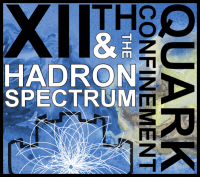Speaker
Description
One of the most challenging questions in contemporary physics is why and how quarks are confined into hadrons. The electromagnetic structure of hadrons, parameterised in terms of electromagnetic form factors, EMFF's, can provide a key.
The focus of this talk is baryon EMFF's. EMFF's have been a powerful tool in understanding the structure of nucleons for more than 60 years but the new techniques and larger samples available at modern facilities have given rise to a renewed interest for the field. Recently, the access to hyperon structure by hyperon time-like EMFF provides an additional dimension.
The BEijing Spectrometer (BES III) at the Beijing Electron Positron Collider (BEPC-II) in China is the only running experiment where time-like baryon EMFF's can be studied in $e^+e^- \rightarrow B\overline{B}$. The BES III detector is an excellent tool for baryon form factor measurements thanks to its near 4$\pi$ coverage, precise tracking, PID and calorimetry. All hyperons in the SU(3) spin ½ octet and spin 3/2 decuplet are energetically accessible within the BEPC-II energy range.
Recent data on proton and $\Lambda$ hyperon form factors will be presented. Furthermore, a world-leading data sample was collected in 2014-2015 for precision measurements of baryon form factors. In particular, the large data sample will enable a measurement of the relative phase between the electric and the magnetic form factors for $\Lambda$ hyperons. The modulus of the phase can be extracted from the $\Lambda$ polarisation, which in turn is experimentally accessible via the weak, parity violating $\Lambda \rightarrow p \pi^-$ decay. Furthermore, from the spin correlation between the outgoing $\Lambda$ and $\overline{\Lambda}$, the sign of the phase can be extracted. The methods will be outlined and the prospects of the BES III form factor measurements will be given. In particular, I will discuss how future hyperon EMFF measurements will benefit from a planned upgrade of the BES III detector.




